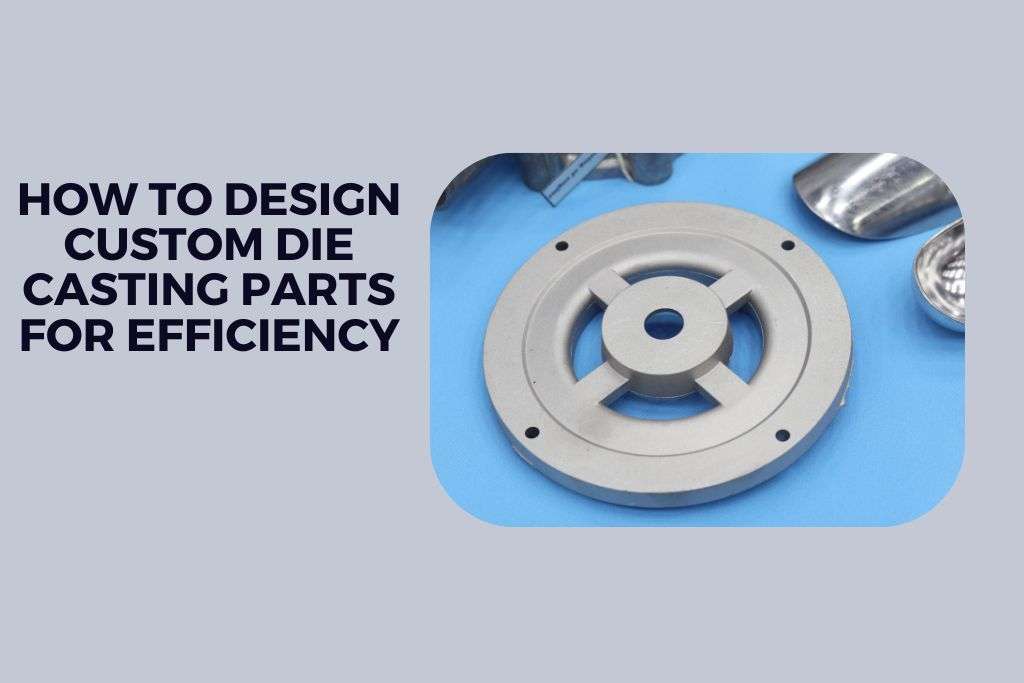
Feb 22,2024
Die casting is a pivotal manufacturing process across various industries to create complex, high-precision metal components. Whether it's automotive parts, electronics, or industrial machinery, die casting is crucial in producing components that meet demanding standards. Designing custom die-casting parts tailored to your specific requirements is critical to elevating the efficiency of your die-casting operations.
This blog post will examine the subtleties of producing practical bespoke die-casting components, emphasizing the need for optimization in the present highly competitive manufacturing climate.t.
Before diving into the world of custom die-casting parts, let's first understand the die-casting process itself. Die casting is a manufacturing method that injects molten metal, often made of steel, into molds. This process allows for the creation of intricate shapes and precise dimensions. Die-casting materials include aluminum, zinc, and magnesium alloys.
The role of custom die-casting parts becomes evident when we consider the diverse needs of different industries. While off-the-shelf components may serve basic requirements, custom parts can significantly enhance efficiency and performance in specific applications.
Custom die-casting parts are engineered to precise specifications, ensuring they fit seamlessly into your products or machinery. This precision translates to enhanced overall performance.
Customization enables you to choose the materials that best meet the needs of your application. In addition to increasing efficiency, this guarantees durability and dependability.
While it may seem counterintuitive, custom die-casting parts can often lead to cost savings in the long run. Efficient designs can reduce material waste and production time, ultimately lowering costs.
Several critical factors must be considered before embarking on the journey of designing custom die-casting parts. The following elements may have a significant influence on how well your die-casting procedures work:
Choosing a suitable material is paramount. Consider factors such as strength, weight, corrosion resistance, and thermal conductivity when selecting the material for your custom parts.
While customization offers endless possibilities, balancing complexity and functionality is essential. Overly intricate designs can lead to manufacturing challenges and increased costs.
Efficiency should extend to the cost of production. Evaluate the overall cost-effectiveness of your design, factoring in materials, labor, and production time.
Custom die-casting parts design efficiency is achieved by carefully considering various elements. Here's how you can optimize your designs for peak performance:
The shape and geometry of your custom part can significantly impact its efficiency. Streamlined designs with minimal sharp angles reduce turbulence during casting, leading to smoother production and less material wastage.
Efficient cooling is essential to maintain the die's integrity and the final product's quality. Designing effective cooling channels within the custom part can prevent overheating and increase production speed.
Understand the material's properties thoroughly. Utilize the unique characteristics of your chosen material to enhance performance, whether it's heat dissipation, conductivity, or durability.
To illustrate these principles, consider a scenario where a custom aluminum heat sink is designed for electronic components. The heat sink's geometry is optimized to maximize surface area for efficient heat dissipation, ensuring electronic components operate at their best without overheating.
The journey to efficiency often involves trial and error. Prototyping custom die-casting parts allows you to test and refine your designs before full-scale production. You can find possible problems through testing, make the required corrections, and eventually reach maximum efficiency.
Real-world examples abound where companies have invested in prototyping and testing, leading to innovative custom parts that revolutionize their industries. These success stories demonstrate the power of experimentation and continuous improvement.
While your expertise in your industry is invaluable, collaborating with die-casting experts is crucial in the customization process. These experts contribute much expertise regarding materials, design principles, and die-casting processes. Their knowledge can help you expedite the customization process and avoid typical mistakes.
Designing custom die-casting parts for efficiency is not without its challenges. Common issues include:
Striking a balance between functionality and complexity can be challenging. Overdesigning can lead to increased costs and production difficulties.
Selecting the wrong material can result in parts that do not perform as expected. Comprehensive material research is essential.
Maintaining consistency and quality across custom parts can be challenging. Implementing rigorous quality control measures ensures that every part meets the desired efficiency standards.
In a competitive manufacturing landscape, efficiency is paramount. Designing custom die-casting parts tailored to your specific needs is a strategic move that can lead to enhanced precision, cost savings, and improved performance. You can create custom parts that optimize your die-casting operations by considering material selection, design complexity, and cost-effectiveness.
Collaboration with die-casting experts and rigorous testing ensure your journey to efficiency is successful. Embrace customization and watch your manufacturing processes reach new levels of efficiency with custom die-casting parts.